Hospice
by Jack Radcliffe
by Jack Radcliffe
Radcliffe's images made at York House Hospice are probably some of the most difficult to view. Even when his pictures center on the touching connection between two individuals preparing to be separated, as in those showing Larry and Frank , or Roger and Dave together, they pierce to the raw heart of terrible illness. More than any of the other images in this project, Radcliffe's communicate the overwhelming effort demanded of the patient by the call to live, to respond to others, when sick unto death.
All of the individuals photographed by Jack Radcliffe were suffering with AIDS; most of them came to York House from humble circumstances; many had led lives of extraordinary insecurity and deprivation.
One of the many amazing attributes of Radcliffe's perception of these people, given the difficulties of their lives past and present, is the sheer vividness of their presence, the sharp individuality and fierce humanity elicited by the camera. Even without knowing the stories of the wonderful child Boo Boo, or the unforgettably proud and quick-witted Sheila, we feel in these mute pictures an almost eerie sense of the life-pulse, and the struggle of those captured in them.
Although Jack Radcliffe's pictures have a look of inevitability, as though they had composed themselves, in fact they are authoritatively crafted. Part of his technique relies on an insistent monumentality of composition, combined with a strong linear drive. His lens reaches right up into the gesture. Mass works in counterpoint with contour. For instance, in each image of the handsome, long-limbed Sheila, the angles of her body and the objects around her, the strong diagonals and curves of each outline in the picture, build a structure emphasizing the key visual element of her and of the picture - her huge, expressive eyes. As we analyze each image, we discover that each employs this same principle of locating some very particular feature - whether a way of posing the arms or body, or a distinctive droop of the jaw - and intuitively presents that feature through artfully empathic, rather than psychologically confrontational, means.
Here again, the pictures reflect a reality outside their boundaries. It is as though the presence of the hospice workers behind the scenes, the unceasing support of their patients' efforts to be aware and to be comfortable, enters the pictorial ambiance despite the single, minded concentration on the physical particularities of the people being photographed."
From Hospice: A Photographic Inquiry.Edited by Phillip Brookman, Jane Livingston and Dena Andre, copyright © 1996. A Bullfinch Press Book. Published by Little, Brown and Company: Boston, New York, Toronto, and London. In Association with the Corcoran Gallery of Art and the National Hospice Foundation.
All of the individuals photographed by Jack Radcliffe were suffering with AIDS; most of them came to York House from humble circumstances; many had led lives of extraordinary insecurity and deprivation.
One of the many amazing attributes of Radcliffe's perception of these people, given the difficulties of their lives past and present, is the sheer vividness of their presence, the sharp individuality and fierce humanity elicited by the camera. Even without knowing the stories of the wonderful child Boo Boo, or the unforgettably proud and quick-witted Sheila, we feel in these mute pictures an almost eerie sense of the life-pulse, and the struggle of those captured in them.
Although Jack Radcliffe's pictures have a look of inevitability, as though they had composed themselves, in fact they are authoritatively crafted. Part of his technique relies on an insistent monumentality of composition, combined with a strong linear drive. His lens reaches right up into the gesture. Mass works in counterpoint with contour. For instance, in each image of the handsome, long-limbed Sheila, the angles of her body and the objects around her, the strong diagonals and curves of each outline in the picture, build a structure emphasizing the key visual element of her and of the picture - her huge, expressive eyes. As we analyze each image, we discover that each employs this same principle of locating some very particular feature - whether a way of posing the arms or body, or a distinctive droop of the jaw - and intuitively presents that feature through artfully empathic, rather than psychologically confrontational, means.
Here again, the pictures reflect a reality outside their boundaries. It is as though the presence of the hospice workers behind the scenes, the unceasing support of their patients' efforts to be aware and to be comfortable, enters the pictorial ambiance despite the single, minded concentration on the physical particularities of the people being photographed."
From Hospice: A Photographic Inquiry.Edited by Phillip Brookman, Jane Livingston and Dena Andre, copyright © 1996. A Bullfinch Press Book. Published by Little, Brown and Company: Boston, New York, Toronto, and London. In Association with the Corcoran Gallery of Art and the National Hospice Foundation.
Joy Ufema
Our dear patients at York House Hospice had trusted too much. They trusted that the needle being used for Heroin was not contaminated with HIV. They trusted their sexual partners who lied about not having HIV. And they even trusted the health system that infused them with blood-filled HIV.
Yet they never lost trust.
They gave themselves over to my incredible staff and me, trusting us to give loving, non-judgmental care. And, in the end, they trusted Jack Radcliffe with his camera. They trusted that he would capture a dignity that, for most, had eluded them. They trusted, one last time, that they would not be betrayed and that Jack Radcliffe would make meaning of their suffering. And he did.
By Joy Ufema, Founder and Director
Our dear patients at York House Hospice had trusted too much. They trusted that the needle being used for Heroin was not contaminated with HIV. They trusted their sexual partners who lied about not having HIV. And they even trusted the health system that infused them with blood-filled HIV.
Yet they never lost trust.
They gave themselves over to my incredible staff and me, trusting us to give loving, non-judgmental care. And, in the end, they trusted Jack Radcliffe with his camera. They trusted that he would capture a dignity that, for most, had eluded them. They trusted, one last time, that they would not be betrayed and that Jack Radcliffe would make meaning of their suffering. And he did.
By Joy Ufema, Founder and Director
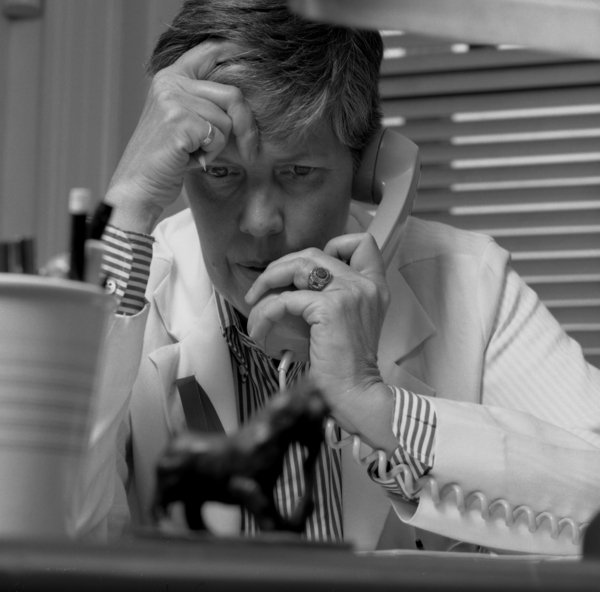
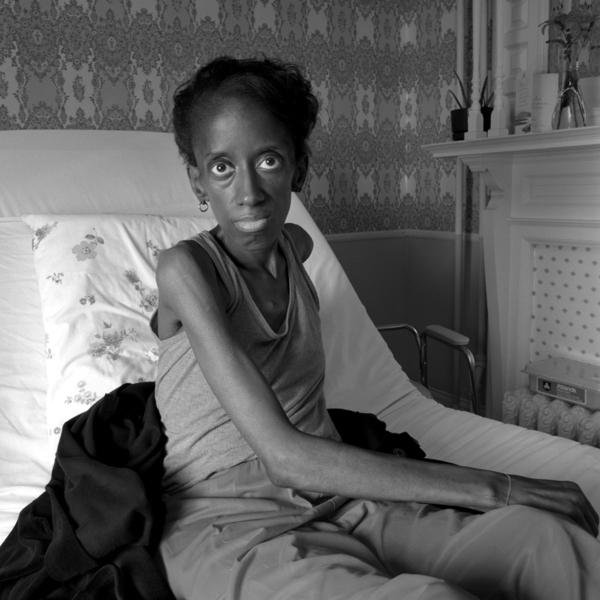

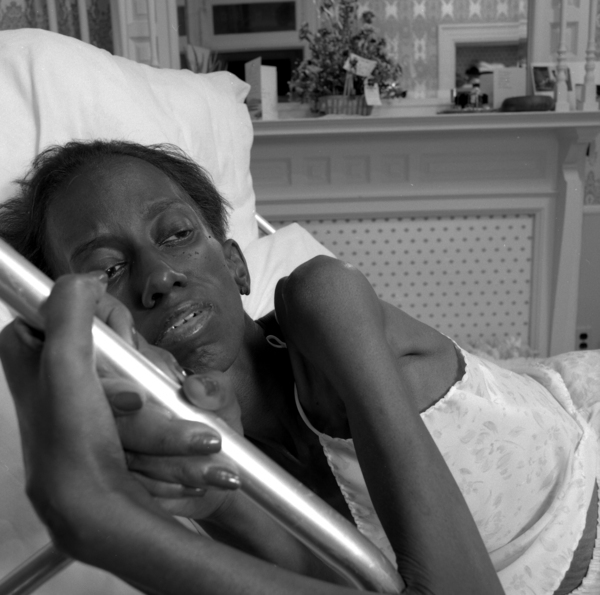

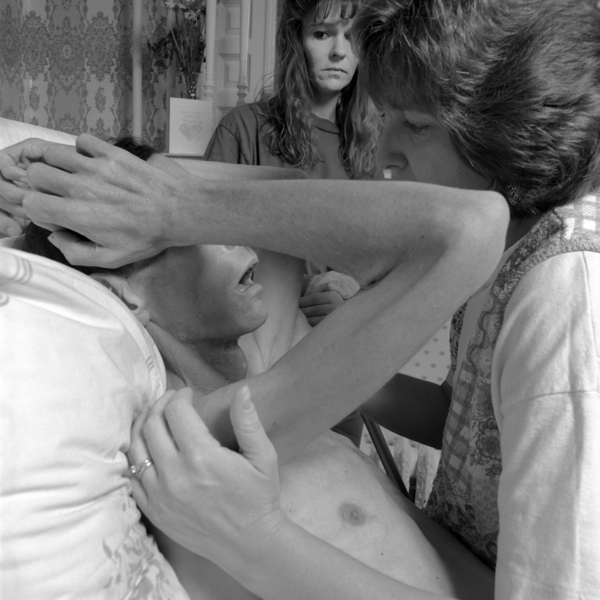
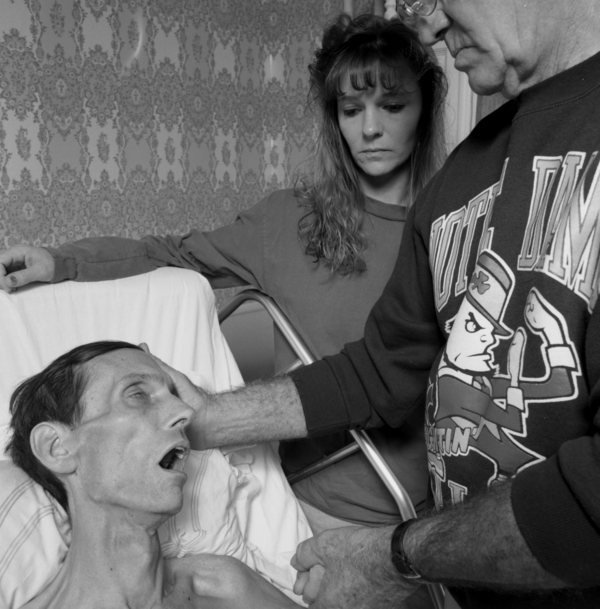
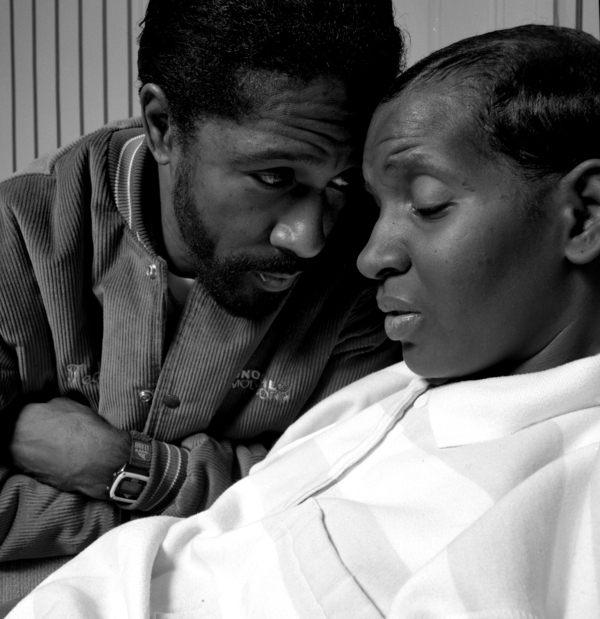

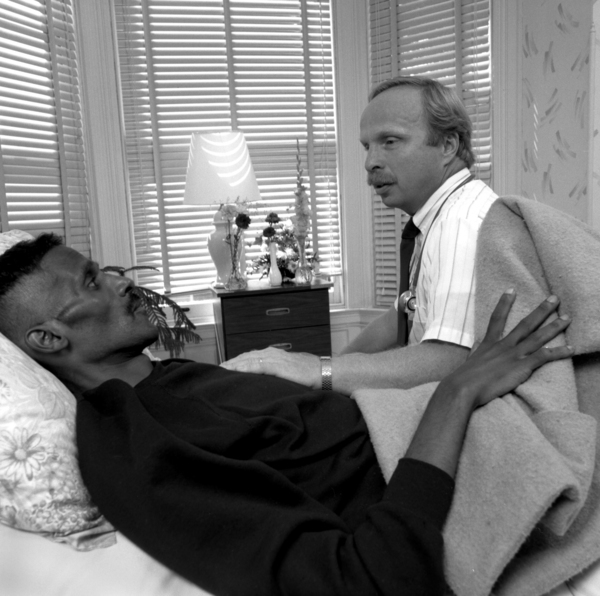




























Barbara Ellen Wood
Barbara Ellen Wood was assigned to me as an intern from Goucher College when the Corcoran Museum approached me about the Hospice project "Hospice A Photographic Inquiry." She joined me in the project and kept a journal of our experiences for the subsequent four years. Her words helps us see the patients as unique individuals and not just victims of the scourge. I am deeply indebted to her because I believe her contribution is essential to the success of these images. - Jack Radcliffe
Barbara Ellen Wood was assigned to me as an intern from Goucher College when the Corcoran Museum approached me about the Hospice project "Hospice A Photographic Inquiry." She joined me in the project and kept a journal of our experiences for the subsequent four years. Her words helps us see the patients as unique individuals and not just victims of the scourge. I am deeply indebted to her because I believe her contribution is essential to the success of these images. - Jack Radcliffe


